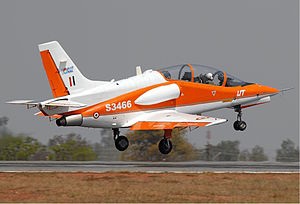HAL flight-tests a modified intermediate jet trainer
19 Apr 2019
Hindustan Aeronautics Limited (HAL) has come out with a modified version of its Intermediate Jet Trainer HJT-36 `Sitara’, three years after the plane was grounded.

Hindustan Aeronautics Limited (HAL) has come out with a modified version of its Intermediate Jet Trainer HJT-36 `Sitara’, three years after the plane was grounded.


Can magnet recycling and rare-earth-free motors reduce global dependence on strategic minerals? Part 4 explores breakthroughs, limits and timelines.

India’s quick-commerce sector is shifting away from “10-minute delivery” hype amid worker safety concerns and rising regulation. Here’s what changes—and what doesn’t.

AI is turning into an electricity crisis as data centres scale from chips to megawatts. Grid bottlenecks, copper demand and cooling limits are now the real AI constraints.

Magnet recycling and rare-earth-free motors are emerging as technology escape routes from critical mineral dependency. But timelines are slower than the hype suggests.

Mining isn’t the real bottleneck in critical minerals. The 2026 processing gap — refining, separation and chemical conversion — is the chokepoint reshaping global supply chains, industrial policy and geopolitics.

Air India vs IndiGo fleet strategy 2026: Air India expands with new Boeing 787-9 widebodies while IndiGo uses A321XLR efficiency and IndiGoStretch to reshape long-haul economics.

Air India’s comeback under Tata enters a new phase as its first post-privatisation custom Dreamliner strengthens the fleet renewal push for premium long-haul travel.

Lithium and graphite are emerging as the key EV bottlenecks in 2026 as South America expands mining while China dominates processing and battery-grade conversion.

Japan launches a 6,000m deep-sea mission as China restricts rare earth exports. Discover how the 2026 “New Oil” crisis is redefining global high-tech trade.



